#playtesting
Explore tagged Tumblr posts
Text

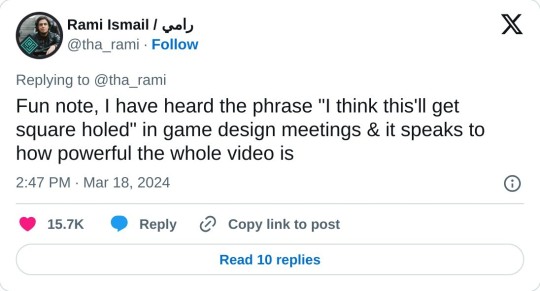
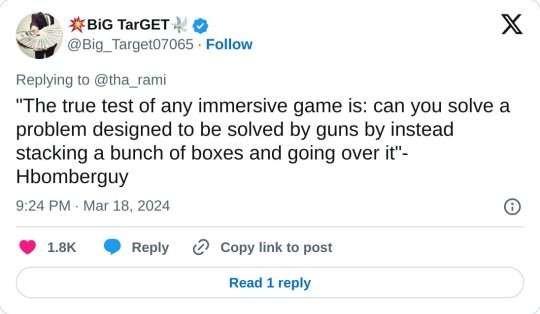
2K notes
·
View notes
Text
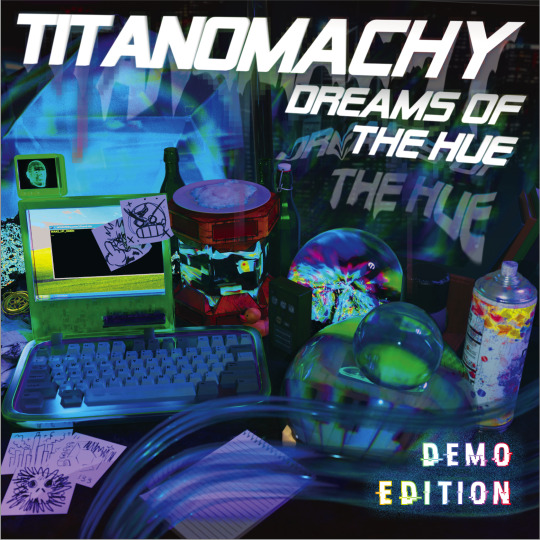
W A K E U P O M E N
This place used to be Houston, now it’s something else, something dying. Titans, lords of industry and everything else left are the ones keeping it in a half-life. There’s a rot that runs so deep there’s no saving it anymore, not as it is. There’s salvation and devastation down this path, but you already knew that, Omen. Free the Hue, free yourselves, and free the future - the Titans must fall.
Titanomachy: DREAMS OF THE HUE / Demo Edition is now live, a fully playable version of the full release entering Kickstarter in late Spring of 2025. It contains the full rules, 19 classes, an example Titan and plenty 00's sensibility but-make-it-nightmare art from the incredible Jonatan Anjos and Minerva McJanda.
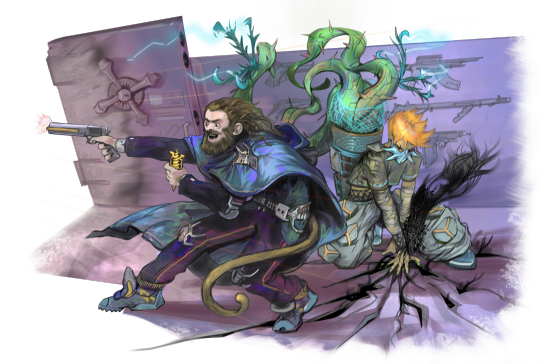

Built on The Wildsea's mechanical engine, TDotH is a fast and furious queer blitz of a tabletop roleplaying game, shrouded with furious revolutionary anger but cored through with hope for a better future.
Fans of Cyberpunk 2077, Spire, NorCo, Jeff VanderMeer, Neil Stephenson, Metropolis, and the work of Tom Bloom (Kill Six Billion Demons) and Wildbow (Worm, Twig, Pact) will find parallels in the broken world we've built for you to tell incredible stories in.
We hope you join us Omen, there's work to be done.
DOWNLOAD HERE
#indie ttrpg#ttrp#ttrpg community#biopunk#cyberpunk#cyber y2k#wildsea#wild sea#tabletop roleplaying#tabletop rpg#tabletop games#ttrpg#ttrpg design#playtesting#queer ttrpg
164 notes
·
View notes
Text
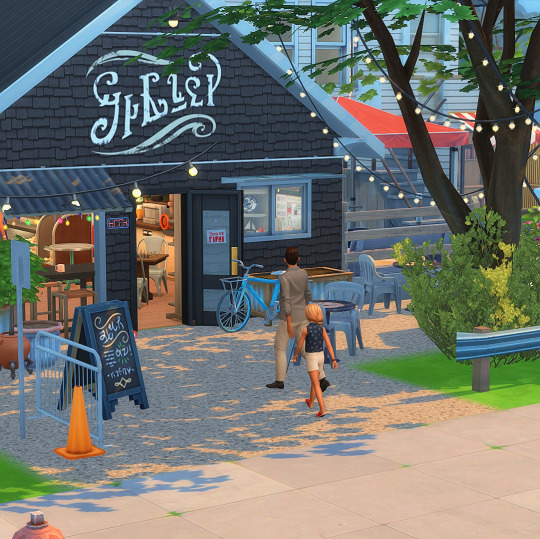



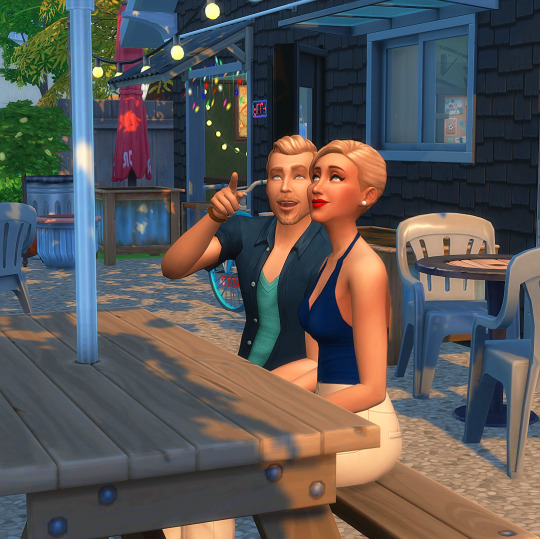
still much to do, but I like to playtest as I build & i'm so happy with how alive this lot feels :) so I thought i'd share a few screenshots
#ts4#the sims 4#ts4 save file wip#no cc#no cc build wip#ts4 vanilla#ts4 vanilla build wip#playtesting#willow creek#willow creek cafe#simblr#pocketfullofsimshine
127 notes
·
View notes
Text
"Protect the Sacred's first complete playtest is here! Protect the Sacred is a anticolonial pulp adventure game that looks to emulate the mood and tone of the pulp movement beyond just as the globe-trekking adventure of stories like Indiana Jones, Johnny Quest, and Tomb Raider, but also pulp as horror, mystery, sci-fi, drama, and even romance.
In Protect The Sacred you work as a member of The Memento Group, an organization that, nominally, is an international nonprofit who is mostly interested in historical preservation, cultural outreach, and the building and support of museums and landmarks. As well as deconstructing and interrogating the colonial legacies of various academias and how they continue into today.
In truth, while they do that work and more, they are also a community-facing resource of specialists who look to protect, preserve, and reclaim a world of magic, monsters, and mystical artifacts on behalf of who they belong to and on that community's terms. Because for the Players of Protect The Sacred, all the intangibles of culture are all so very tangible.
Play as adventurers armed with folkloric magic power, deeply rooted in their connections to the culture around them. From wielding a legendary magical item, to practicing a cultrual magic, to taking the form of the fiercest monsters from your people's stories.
Explore the mythic realms talked about in the legends of heroes and gods as part of the Grand Outside, a magical otherworld in a mutually affecting relationship with the material. Explore a secret wizards nightmarket for clues and rumors on a trail for a stolen remains. Brave impossible and strange dungeons formed by stories that need to be told and stare truth straight in the eyes. Plan a heist to steal back the pilfered and stolen.
In this game I look to ask people to consider themselves, their relationship to culture, and what it looks like. I want you to consider and think on the meaning and value of the stories, lessons, and skills we pass on to others. I want to ask how we could challenge the ways we build and engage with history and these stories. This is a game where you fist fight fascism in many forms. It's a game about telling stories and building heroes. Are you ready to Protect the Sacred?" --- Information about joining the playtest can be found in the link! I'm excited to show y'all what I've been working on for about 2 and a half years.
163 notes
·
View notes
Text
The most consistent piece of playtest feedback I've been getting on Space Gerbils is that the Action Phase sucks, on two counts:
Blowing your roll in the Action Phase can retroactively make the Operations Phase minigame feel pointless, and there isn't really any provision for addressing runs of bad luck; some playtest groups routinely managed to whiff a 15/16 chance of success three or four cycles in a row, which makes the whole engagement grind to a halt, and there isn't an obvious way to mitigate that when an entire round of prep work boils down to a single roll of the dice.
The first point feeds into the second: the Operations Phase has its positional minigame, and the Fallout Phase has those lovely lookup tables, but then Action Phase hanging out between them is kind of nothing, mechanically speaking. Many players have reported that it feels like the Action Phase ought to have a minigame as well, and that it's incongruous for the portion of the phase cycle where stuff actually happens to be the least mechanically engaging.
There've also been reports, where drafts 0.1 and 0.2 would often become unplayable due to the play grid filling up with broken stations, drafts 0.3 and 0.4 have swung too far in the opposite direction and made complications too easy to mitigate. It's unclear whether this is due to the Action Phase's mechanics not throwing complications frequently enough, or due to the Fallout Phase not assessing those complications harshly enough; probably it's a mix of both.
Fortunately, the game's modular nature means that it's actually fairly trivial to rip out the current Action Phase procedures and replace them with something else; very little of the rest of the system would have to change. The trick is figuring out what that should look like.
The most obvious routes involve introducing individual actions in the Action Phase, but that's exactly what we don't want; mechanically, because we just made each gerbil perform a tactical action in the Operations Phase, and doing it twice in a row would double the handling time of an already ponderous system; and thematically, because acting "as" the gerbils' singular assumed persona after doing all that setup as individuals is kind of the whole point!
In balance, this is a good problem to have, because I enjoy designing stupid minigames.
As for what that hypothetical Action Phase minigame might look like, I keep coming back to the idea of taking a page from Gone to Hell and formalising the presently-optional rule that the players should take turns "being" the bounty hunter persona in each Action Phase. That would definitely help with sorting out the forthcoming rules for GMless play, since the players whose "turn" it isn't could step into the encounter management roll. However, that leaves the off-turn players twiddling their thumbs every Action Phase in GMful play, which in turns means either having two separate sets of Action Phase procedures for GMful and GMless play, or biting the bullet and making Space Gerbils exclusively GMless, neither of which terribly appeals.
This post is mostly just me thinking out loud, so I don't expect anyone to have an opinion, but as always, I'm open to suggestions!
213 notes
·
View notes
Text
interested in playtesting?
if you're a fan of TTRPGs, queer stories, emotion-based magic systems, body horror, helping indie creators, or free stuff, i have the opportunity for you! i'm looking to gauge interest for playtesting my game, 'til it kills us, and tumblr seemed like the best place to go
if you are interested in playing the game, in an official setting or with your own group, consider signing up! this is just interest, so you're not making a commitment, and you'll get a free copy of the game
#playtest#playtesting#ttrpg#indie ttrpg#ttrpgs#ttrpg community#'til it kill us#apologies for the form but i'm doing this on two different platforms#and the form is the easiest way#all i need is a discord username!#and i'll reach out to you when i actually plan to begin playtesting#(there's also an option for just giving feedback without playing!)#(for all the folks who don't want to play with strangers but don't have their own group)
56 notes
·
View notes
Text
Zorlok Playtesting Application
Oh, hello! Since it's been (checks watch) over two and a half years since the first demo dropped, I'm looking for a few new people to join Zorlok's beta testing team. I've opened a new application for playtesters so, if you're interested, you can check out the link below or read more about what playtesting involves under the cut.
This playtesting application will remain open through February 21st. People chosen as playtesters will hear back from me (Albie) by February 23rd. I'll only be selecting a few people at this time but, if you aren't chosen, rest assured there will be more opportunities to apply in the future (and I encourage you to do so).
Note: If you were a beta tester before, you are more than welcome to continue on as one. There's a post about this in the Discord server. If you've lost access to that server for whatever reason, let me know.
Thank you so much for your interest and your time! (regardless of whether or not you want to playtest, I just appreciate you)😊
APPLY HERE (CLOSED)
For more information on what playtesting entails, check below the cut.
What is playtesting?
Playtesting is the process of combing through the unreleased version of a game searching for bugs, typos, grammatical errors, and other mistakes. Playtesters are expected to point out any errors they find so that the public release is as polished as possible. Playtesters are also expected to provide feedback on the game's content, continuity, choices, and may be asked for input on other topics related to the game's future storylines and character arcs.
Because this game is heavily impacted by choice with many different customization options and paths available, playing through the game multiple times and exploring different options is an important part of the playtesting process.
Playtesting is a volunteer position. Those chosen as playtesters can decide whether or not they'd like to be credited on the Zorlok masterpost, the itch.io page, and/or in the game's credits.
Most importantly, playtesting is not just a way to get early access to the game. If chosen, you will be expected to provide feedback within a specific time window. Playtesters must keep links and passwords private. All discussion of unreleased game material must be kept to the private Discord server. Playtesters who leak info or share the unreleased game with others will immediately be removed from the team. Playtesters might also be removed from the position if they are repeatedly inactive during the playtesting process.
If at any time—for any reason—you want to opt out of playtesting, that is fine. You may do so with no questions asked (just please let me know you won't be participating anymore).
All communication will be done through Discord in the private server.
Thank you so much for your support and time. If you are interested in playtesting for Zorlok:
CLICK HERE 😊
67 notes
·
View notes
Text
did a really scary thing last night (playtested one of my own games) and wrote a blog about it!
The game in my head only exists there, in my head. No matter how much I talk with friends and colleagues about it, no matter how much I declare my intentions for further writing, the game is still only in my head until we try to play it.
25 notes
·
View notes
Text

hi friends! i hope you're doing well :) with all the great big changes to larkin, I'm putting in a final call for beta-testers and readers for both the five chapter demo-version of larkin to be released on April 29th, 2024 and the final version of larkin to be released on April 29th, 2025.
apologies I'm putting out another form, the first call went through and ran into some creator-error as a lot of the contact information got muddled, so i wanted to put forth a new call hoping to hear from testers old and new. I'm looking for about 25-30 players, as Larkin has grown significantly in chapters (20+ chapters) with several major plot routes and romance routes added, so I need a lot of thoughts and feedback on it.
if you could do me a favor and fill out this form, I'll be responding early next week.
*note, if you've already been selected as a beta-tester previously, don't worry! I'll be shooting you a message within the next few days.*
Larkin: Resurrection is the first in a series of text-adventure games that relies heavily on player choice. A vampire western, the game takes place in the fictional town of Larkin, Nevada, where you the player step into the shoes of the player character--or The Preacher. The Preacher, apprentice to the prolific vampire hunter, Wyatt Abrams, and one of the last remaining survivors of the Vampire-Hunting Cult, The Abrams Family, is suddenly thrust into the position of Town Preacher for Larkin. Demons from the players past seem to chase the Preacher--only made worse when the local mine explodes--and you're at the center of the conspiracy. Larkin is rated 18+ for themes of gore, violence, religious trauma and sexual implicity. The demo of the game will be released, April 29th 2024, with the slated release for the final version of the game, April 29th of 2025. Once betas are selected, the demo version of the game will be sent to players April 1st, 2024 -- testers will have one month to go through the text and collect feedback. Playtesters and beta-readers will be tasked with playing through and reading the content of the game, testing for coding errors, and giving thoughts/feedback on their personal experiences with the text of the game. Testers will be selected based on experience, and willingness to explore different avenues and choices of the game.
#larkin if#if#larkin#interactive fiction#choose your own adventure#text based game#cyoa#vampires#game testing#beta reading#beta request#beta readers#playtesting
163 notes
·
View notes
Text
In case you missed it, the Undertale Accessibility playtest is out now! This is a great opportunity to hear some of the voice acting and get a look at the control system. This test also reveals the voice of the narrator. Seeing and sharing the video will help the Undertale Accessibility Project greatly. Have fun stealing candy, everyone. 😋 (You need to watch it on YouTube for the controls to work.)
youtube
#undertale#voice acting#toby fox#sneak peek#bettina levy#accessibility#youtube#animation#choose your own adventure#playtesting
125 notes
·
View notes
Text



TITANOMACHY: Dreams of the Hue | Omens 01 & 07
Art credit to the incredible Jonatan Anjos
RORY | background: WESTERN TRANSPLANT | hustle: AUGMENTATION REPOSESSION SPECIALIST | specialty: ORGANIST (L)
YESENIA | background: CONGLOMATON | hustle: DATALIST | specialty: OSTRAKON (R)
An Omen can't be too afraid to get their hands wet, and some callings end up with much, much wetter hands than others. Here we revisit an old friend, (our Repo, Rory), and meet a new friend dealing in the nightmarish realm of wetworks - Yesenia.
The Ostrakon deals in the realm of Dreams and the unconcious minds, even the whispers of it that remain after death. Using latent augmentations, Ostrakons can take control of recently deceased, plunge into memory, and discover exactly how far the mind can go before it breaks.
We've been very, very busy these past few months! Two successful con showings at both Big Bad Con and PAX Unplugged have led to now dozens of playtests and 4 ongoing campaigns! We couldn't be more excited to barrel towards crowdfunding in April, and to start to see the end phases of TDotH campaigns.
That being said, we need more! Please join us in our community Discord, and check out our free Demo Edition on itch. Thanks as always!
~Sillion
DOWNLOAD HERE
#indie ttrpg#ttrpg community#biopunk#cyberpunk#y2k#wildsea#wild sea#tabletop roleplaying#tabletop rpg#tabletop games#ttrpg#ttrpg design#playtesting#queer ttrpg#TDOTH#Titanomachy#character art#original character#TDoth Iconics#Iconics
38 notes
·
View notes
Text
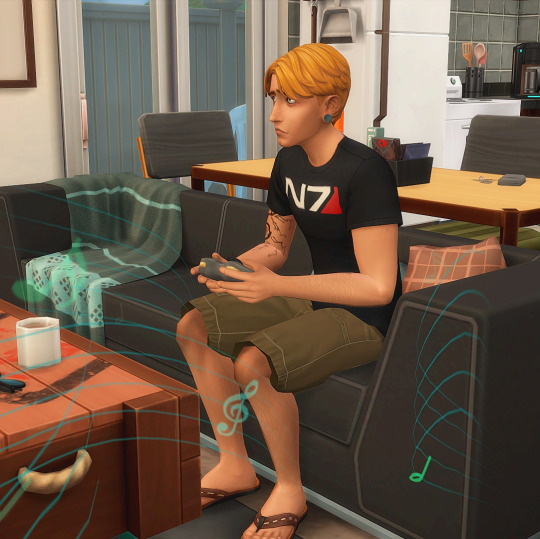
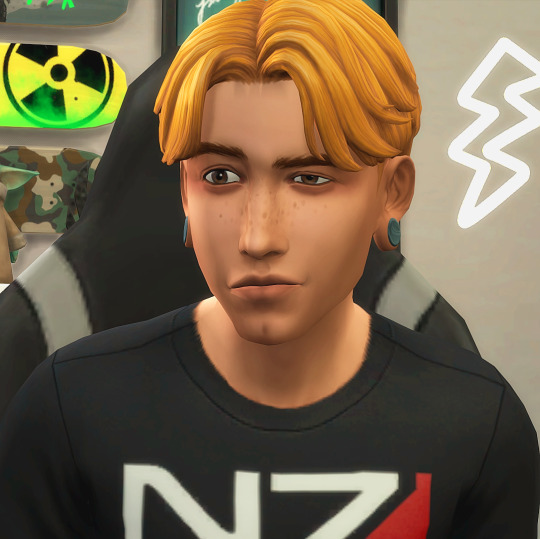
I gave travis scott another cc free makeover - so naturally he had to play test his apartment :) I went with a completely different vibe this time. what do y'all think?
131 notes
·
View notes
Text
Most of the time, I like to have a fairly worked-out game when I start testing. No notes-on-a-napkin for me. But yesterday, I went into a playtest without the full material for the first time. The sessions were going well and I wanted to see how it would feel to do some design at the table.
The last category of clues for my mystery game is called Recapitulation. They serve to answer the question: "What do you plan to do about [the antagonist]?" While I had some idea of what those clues could be, the image hadn't really cleared up. So I thought: maybe I can just see what we need.
When the first moment to drop such a new clue came around, I still couldn't figure it out. In general, that could've become a moment of panic for me, but this time, probably because of the specific group I'm testing with, I didn't. Instead, I explained the issue—which was still scary!
After I explained what clues I was looking for, the players all pitched in. We used the scene that was just interrupted as an example and tried to think of good leads. We also thought about changing the question to something more narrow, like: "How will you avenge [the victim]?"
Then it hit me. A good, general clue that I could contextualize for the situation at hand, and that would work well with the question we started out with. I've been thinking about that moment, about how the conversation helped create it. Why didn't the player's suggestions irk me, for example?
The game is a Carved from Brindlewood. It's a hack of The Between, mostly. The things me and the players discussed yesterday, the clues and questions, weren't mechanics per se. More like the content of those mechanics, I guess. That made a difference, I think.
It was like discussing possible fiction. That's what I've concluded up until now, at least. While I'm not fond of discussing mechanics, at least not ad hoc, nor do I like unrequested notes on my writing, this was closer to play, closer to workshopping a scene, for example.
So I learned something about the details and elements of a game that I am comfortable determining at the table, and that feels like a nice, little achievement. I let go of some control, I trusted the people I know to care, and it worked: that first clue led to nine more today. I've finished writing the Recapitulation.
#The Girls of the Genziana Hotel#carved from brindlewood#indie ttrpg#rpg design#chambermaids#playtesting
46 notes
·
View notes
Note
Brief summary of my thoughts so far now that I've done character creation and played half a session (we broke in the middle but may come back to it):
1) 7 players and a GM is too many. I know you know this already but I want to reaffirm it because that was what we had and it was really hard to understand what was going on.
2) I made my character 100% random and then backsolved an identity from there, and it worked better than it had any right to. The Traits are very evocative and I immediately had ideas of what I wanted my God Eater to look like.
3) I'm not sure the Calamity Clock is explained as clearly as I'd like it to be; to be honest, Tests in general are explained in a pretty convoluted way. It felt like some of the less-experienced TTRPG players at the table struggled with them, especially coming from a 5e-only background.
Sorry if this isn't the most helpful feedback; I'm just getting my thoughts down before any more time passes and I forget how the session went. I'll do a more full writeup if/when we finish the session.
(With reference to this post here.)
I definitely agree that the process of making tests could use a cheat sheet, and that's something that will be present in future revisions. However, it's worth noting that it's probably impossible to boil it down to something that a player with a 5E-only background would find intuitive because of some pretty basic differences in what kind of games they are.
In brief, 5E (and Dungeons & Dragons in general) keeps its conflict resolution mechanics almost entirely GM-facing in order to make it easier to onboard new players. Those mechanics are structured in such a way that it's completely feasible for the GM to figure out the target numbers, the applicable modifiers, the range of plausible outcomes, and the interpretation of the results with no player input whatsoever, with the player's sole responsibility being to roll a die with the correct number of sides (and if push comes to shove, the GM can do that part, too).
Eat God, conversely, is designed from the ground up to readily support GMless play (the specific rules for that will be in a forthcoming revision), which means that its conflict resolution mechanics can't be purely GM-facing. It puts a lot more responsibility on the player in terms of figuring out what the hell is going on, both narratively and mechanically, because its design goals mean it has to.
That said, it might help to frame it for a 5E player like this:
Making a test in Eat God is like playing blackjack: rather than rolling as high as possible, you want to roll as high as possible without going bust; "going bust" means all of your dice came up higher than your relevant Facet.
Everybody gets one die to start. If you can use any of your Traits to help with whatever you're trying to do, you get advantage on the test and roll an extra die. Unlike 5E, advantage stacks, to a maximum of five dice.
Instead of having a separate "damage roll", Eat God gets "did I hit or miss?" and "how much damage did I do?" from a single roll. A test's "damage" is the face value of the highest die that didn't go bust; the rules refer to this "damage" as a capital-R "Result".
You can get bonuses or penalties to a test's "damage" based on how effective the GM thinks your approach is. The GM will generally tell you about these modifiers before rolling. A penalty can't turn a success into a failure, no matter your Result; just like in 5E, a successful hit always inflicts at least one "damage".
Instead of critical hits, Eat God has critical fuckups. These have a range of dice roll values that trigger them, just like conventional crits; for example, you might score a critical fuckup on a roll of 11+, just like a champion archetype fighter in 5E gets a critical hit on a roll of 19+. This range can vary depending on how goofy the GM thinks your approach is.
Critical fuckups are assessed on a per die basis, so if you're rolling multiple dice, it's possible to generate multiple critical fuckups on the same roll. Yes, this also means that rolling multiple dice makes you more likely to succeed and more likely to fuck up, and creates the possibility of doing both on the same test. This is intentional.
When you roll a critical fuckup, the GM doesn't have to make something bad happen to you right away. They can do that, or they can take the fuckup and bank it toward a countdown to a really big fuckup that affects the whole adventure. You can see this countdown, but the GM is not obligated to tell you what will happen when it hits zero.
263 notes
·
View notes
Text
interested in playtesting an indie TTRPG?
'til it kills us is a dark fantasy TTRPG, written by me, about the balance between magic, mental health and queer activism. if you like queer narratives, dark magic, mecahnics that encourage stealing the spotlight, and stories about horrible, messy found families, this is the game for you! and you can help influence its design :)
the playtesting interest form (which expresses your desire to playtest, not committing to anything) will be closed on Monday February 10th. so if you're interested, sign up now! here's the link to the form:
#indie ttrpg#playtest#playtesting#ttrpg#rpg#indie rpg#ttrpg community#ttrpg design#my games#'til it kills us
37 notes
·
View notes